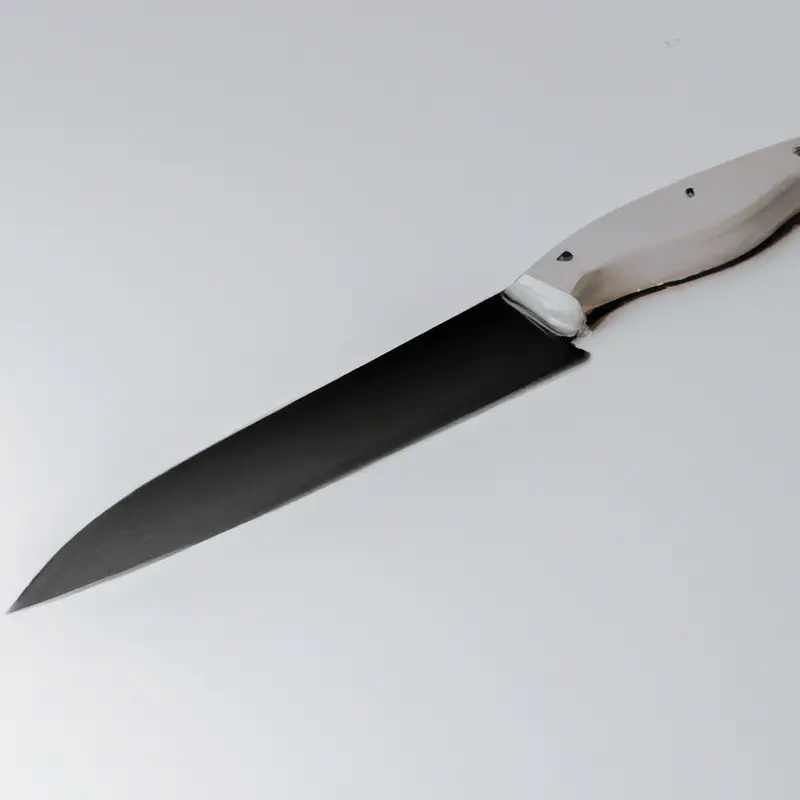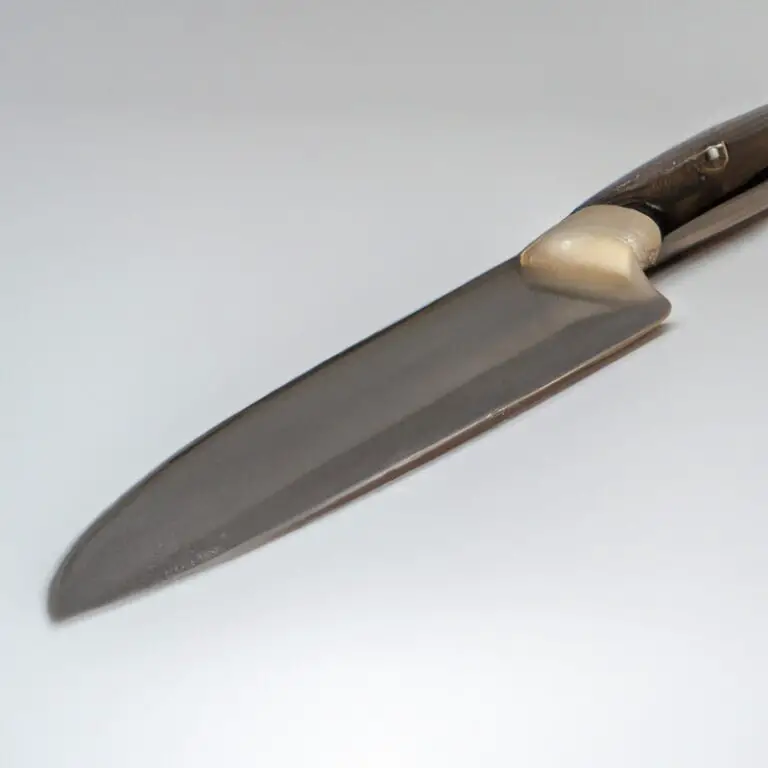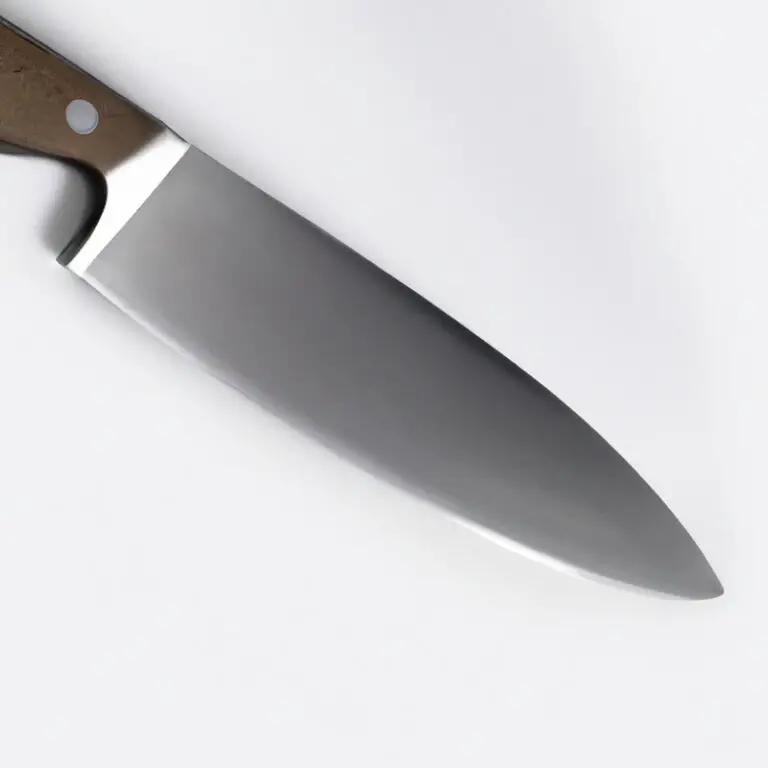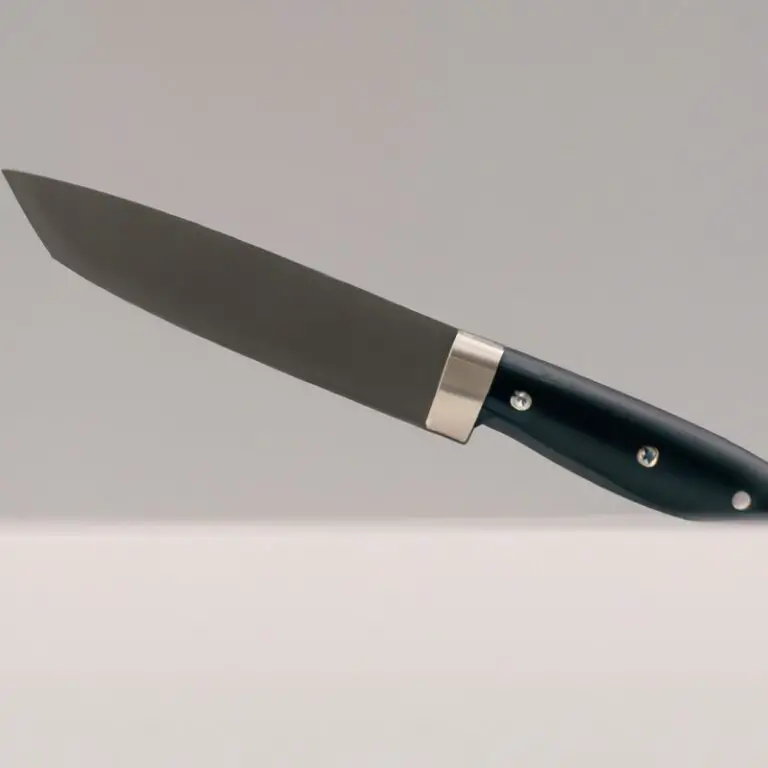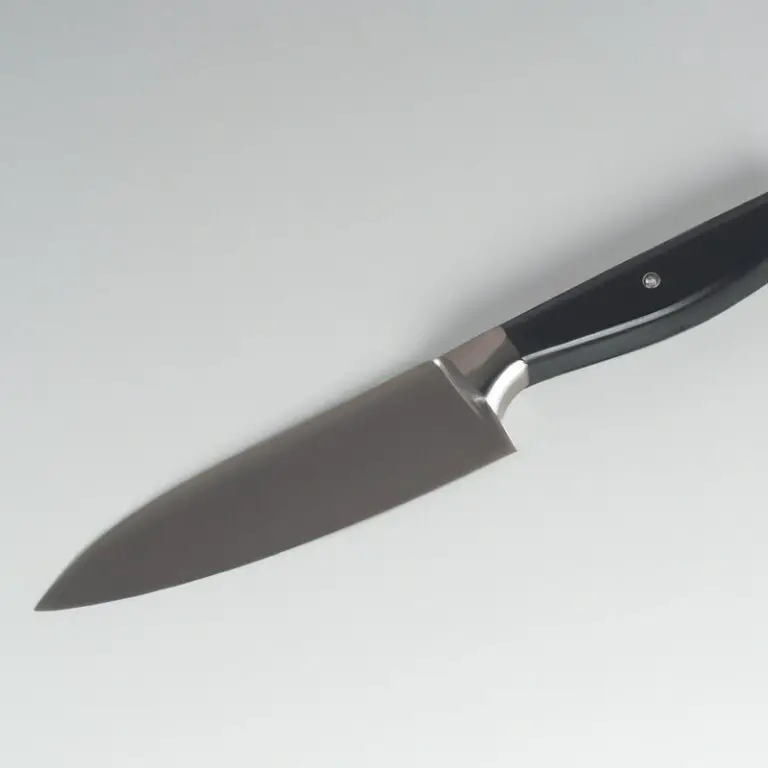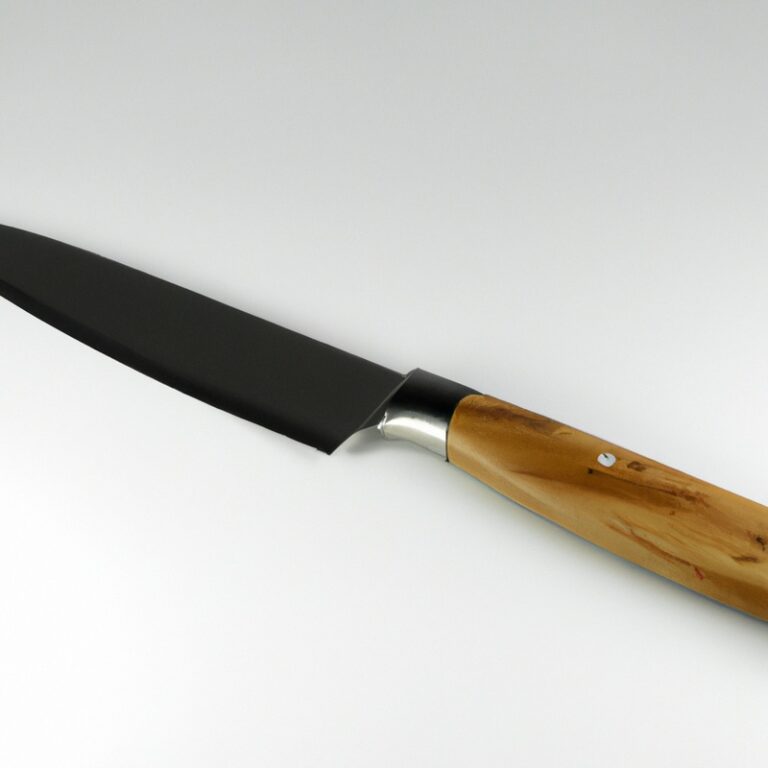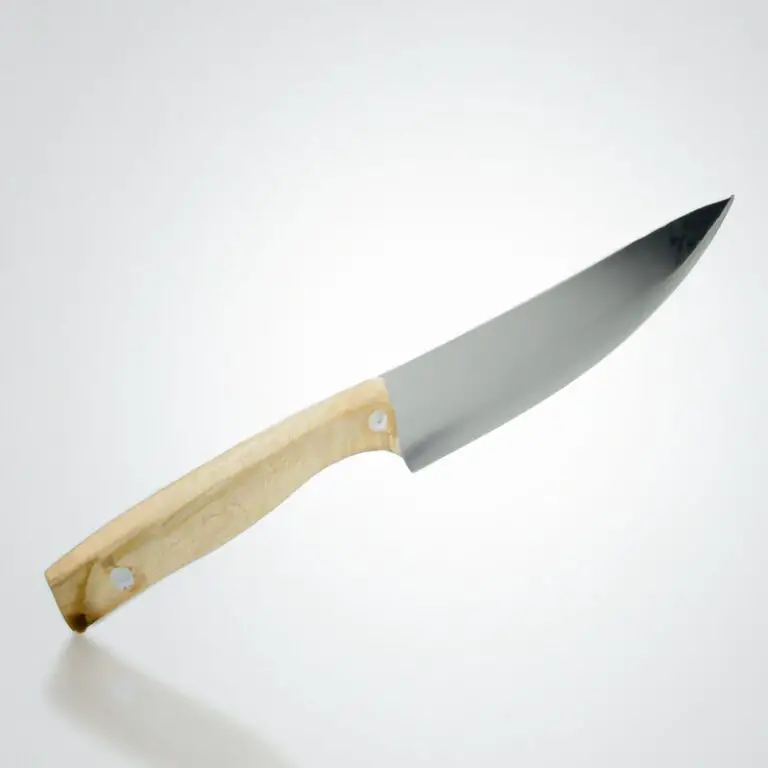What Is The Purpose Of a Carving Knife?
Key Takeaways:
- A carving knife is designed to slice and carve meat with ease and precision.
- The purpose of a carving knife is to maintain the integrity and presentation of the meat.
- A sharp and well-maintained carving knife is essential for achieving restaurant-level results.
- Investing in a high-quality carving knife will enhance your cooking experience and impress your guests.
When it comes to preparing meat, a regular kitchen knife won’t cut it (pun intended). That’s where carving knives come in.
But what exactly is the purpose of a carving knife, and how is it different from other knives in your kitchen?
As a cooking enthusiast, I have found that a carving knife is essential for creating beautiful and consistent cuts of meat. In this article, we’ll explore the anatomy of a carving knife, tips for optimal performance, maintenance, safety, and more, so you can elevate your meat-carving game to the next level.
| Purpose | Description |
|---|---|
| Carving | A carving knife is designed to precisely cut meat in thin, even slices. It typically has a long, narrow blade that tapers to a point, allowing for greater control and accuracy during the carving process. |
| Appearance | Carving knives are often decorative and have ornate handles, making them a popular choice for special occasions and holiday meals. |
| Material | Most carving knives are made from high-quality stainless steel, which ensures durability and resistance to rust and corrosion. |
| Size | Carving knives can range in size from a small, 6-inch blade to a larger 14-inch blade, depending on the size of the meat being carved. |
Understanding the Anatomy of a Carving Knife: Components and Functions.
A carving knife is a specialized tool used for cutting and slicing cooked meats, poultry, and other foods. It usually consists of a long, narrow blade with a pointed tip, a sharp cutting edge, and a comfortable handle that provides a secure grip.
The blade of a carving knife is typically made of high-quality stainless steel or carbon steel, which is durable, strong, and resistant to corrosion.
The blade length can vary from around 8 to 14 inches, depending on the size of the food being carved. The handle of a carving knife can be made of various materials such as wood, plastic, or metal.
It should be ergonomically designed to fit comfortably in your hand and provide a secure grip that allows for precise control.
The purpose of a carving knife is to make precise and consistent cuts on cooked meats, poultry, and other foods without damaging the texture or appearance of the food. The pointed tip and narrow blade allow for easy maneuvering around bones and joints, while the sharp cutting edge ensures clean, even slices.
In addition, the long blade of a carving knife provides leverage that allows for longer and smoother cuts, resulting in more beautiful and presentable dishes.
With proper use and maintenance, a carving knife can become an essential tool in your kitchen for many years to come.
How to Properly Hold and Grip a Carving Knife for Optimal Performance.
To properly hold and grip a carving knife, follow these steps:
- Start by placing your index finger on top of the blade near the bolster, where the blade meets the handle.
- Wrap your remaining fingers around the handle, making sure to keep them away from the blade.
- Keep your thumb on the opposite side of the handle, opposite to your index finger.
- Grip the knife firmly, but not too tightly.
- Position your hand and arm to create leverage and optimal cutting power. Keep your elbow at a 90-degree angle and use your shoulder and wrist to guide your cuts.
- Always cut away from your body and keep your non-dominant hand well clear of the cutting area.
Remember to always maintain proper control and awareness when holding a carving knife to avoid accidents or injury.
Different Types of Carving Knives and Their Unique Features.
There are various types of carving knives available, each designed for a specific purpose. Here are some of the most common carving knives and their unique features:
- Slicing knife: As the name suggests, a slicing knife is used for slicing meats such as roasts and hams. It has a long, thin blade with a pointed tip that can carve even thin slices of meat.
- Carving fork: A carving fork is ideal for holding poultry or meat steady while you carve. The prongs are sharp and can hold the meat securely in place.
- Chef’s knife: Although not strictly a carving knife, a chef’s knife can also be used for carving. It has a wider blade, which makes it perfect for cutting large vegetables or fruits.
- Utility knife: A utility knife is smaller than a chef’s knife but larger than a paring knife. It is suitable for carving smaller meats or fruits.
- Cleaver: A cleaver is a heavy-duty knife with a thick, sturdy blade that is perfect for cutting large pieces of meat or slicing through bones.
When choosing a carving knife, it’s important to consider the type of meat or food you’ll be carving. Different knives work better for different tasks, so it’s important to choose the right one for the job.
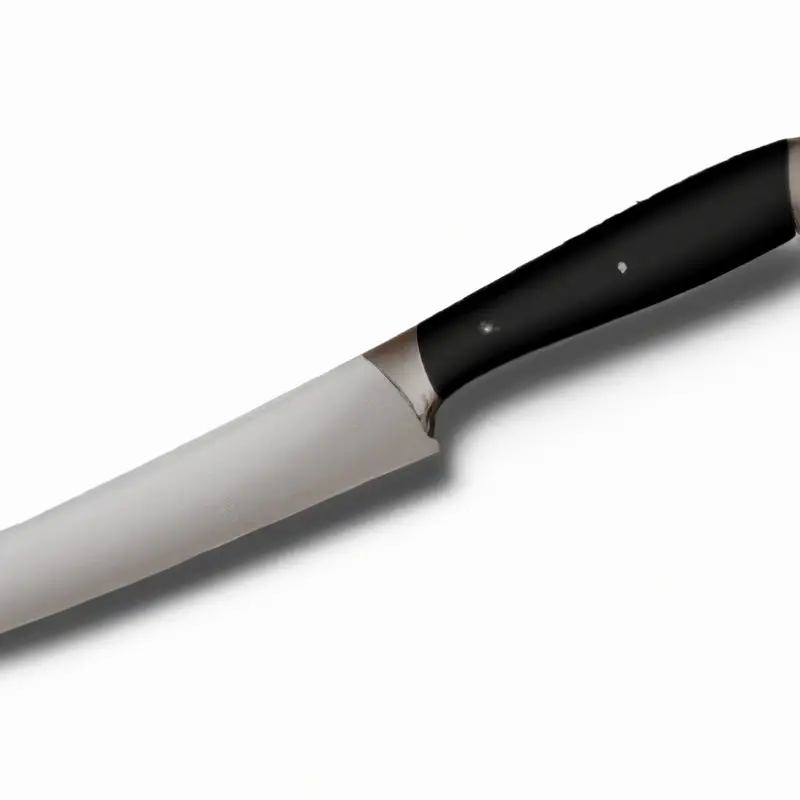
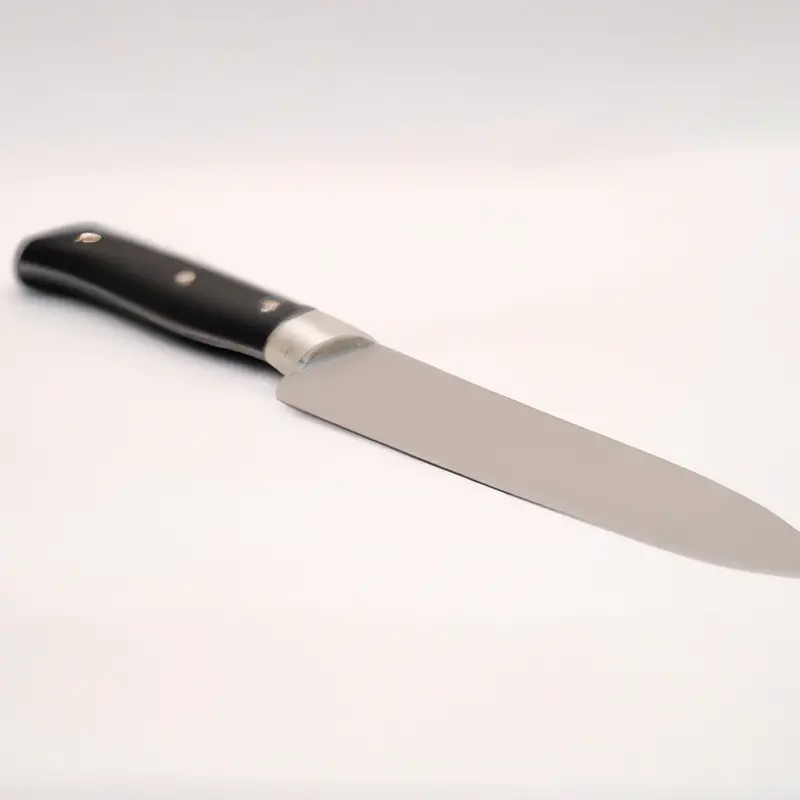
The Importance of Choosing the Right Blade Material for a Carving Knife.
Choosing the right blade material for a carving knife is crucial to achieving optimal cutting performance and long-term durability. The most common blade materials for carving knives include stainless steel, high carbon steel, and ceramic.
Stainless steel blades are resistant to rust and corrosion, but can be less sharp and prone to dulling.
High carbon steel blades are incredibly sharp and hold an edge well, but require more maintenance and are more susceptible to rust and corrosion. Ceramic blades are extremely hard and durable, but can be brittle and prone to chipping.
Consider your needs and budget when choosing a blade material for your carving knife.
Remember to properly care for and maintain your knife to ensure it lasts for years to come.
How to Sharpen a Carving Knife: Techniques and Best Practices.
To sharpen a carving knife, follow these steps:
- Choose the right sharpening tools and materials. You can use a sharpening stone, honing steel, or electric sharpener, depending on your preference and skill level. Make sure the grit is appropriate for your blade.
- Hold the knife at the correct angle on the sharpening surface. This can vary depending on the knife, but a 20-degree angle is a good starting point.
- Apply consistent pressure and stroke the blade over the surface, moving from the base to the tip. Repeat on the other side of the blade.
- Check the blade for sharpness by gently running your finger along the edge, being cautious not to cut yourself.
- Hone the blade with a honing steel to realign the edge and remove any burrs.
It’s also important to maintain the cleanliness of the knife and to use the appropriate cutting board to prevent dulling the blade. Sharpen your knife regularly for optimal performance and longevity.
Expert Tips for Maintaining the Quality and Longevity of a Carving Knife.
Expert Tips for Maintaining the Quality and Longevity of a Carving Knife:
- Always hand wash the knife immediately after use and dry it thoroughly to prevent rust or corrosion.
- Use a honing steel to maintain the sharpness of the blade before and after each use.
- Avoid putting the knife in the dishwasher as it can damage the blade and handle.
- Store the carving knife in a blade guard or sheath to protect it from any damage or accidents.
- Avoid using the knife on hard surfaces as this can dull the blade quickly.
- Regularly oil the blade to prevent rust and maintain its shine.
- Use a sharpening stone to sharpen the blade when it becomes dull.
- Always cut on a cutting board to avoid damaging the blade.
By following these tips, your carving knife will maintain its sharpness and quality, ensuring longevity and efficient use.
Carving Knife Safety: Essential Precautions to Take While Using One.
When using a carving knife, it is essential to take some necessary precautions to ensure safety. Here are some essential tips to consider when using a carving knife:
- Keep your knife sharp: A dull blade can cause you to apply too much pressure, leading to slips and accidents. Thus, ensure that your carving knife is sharp.
- Choke up: Choking up on the blade is a good way to prevent injury. By gripping the knife close to the blade, you have better control over the blade, and you can prevent the knife’s tip from penetrating too deeply.
- Keep your fingers away: Avoid putting your fingers in harm’s way by keeping them away from the blade’s cutting path.
- Avoid distractions: It’s important to focus on the task at hand and avoid distractions while using a carving knife, especially when carving.
- Use the right surface: When carving, use a stable surface that won’t shift due to the knife’s pressure. Avoid slippery surfaces that can cause the knife to slip.
By following the above precautions, you can work safely with a carving knife and avoid accidents that could result in serious injury.
The Art of Carving: Techniques for Achieving Beautiful and Consistent Cuts.
The art of carving requires certain techniques to achieve beautiful and consistent cuts. Here are some tips to help you master the skill:
- Choose the right knife: Different types of knives are suited for different foods. A chef’s knife can be used for most tasks, but a carving knife is ideal for slicing large cuts of meat, poultry, or fish.
- Position your hand: Your dominant hand should grip the handle of the knife with your thumb and index finger around the bolster. Your other hand should hold the food in place.
- Create a stable cutting surface: Place the food on a stable surface with a damp cloth or paper towel underneath to prevent it from slipping.
- Use a proper cutting motion: Use a smooth, sawing motion with a slight angle to create thin, even slices. Keep your other hand out of the way to prevent injury.
- Practice makes perfect: With time and practice, you will develop the muscle memory needed to create consistent cuts. Don’t be discouraged if your first attempts are not perfect.
By following these techniques, you can achieve beautifully carved pieces of meat, poultry, or fish that will impress your guests and improve the overall presentation of your meals.
When to Use a Carving Knife: Situations and Foods that Require Specialized Tools.
A carving knife is a specialized tool designed for slicing through larger pieces of meat, poultry, and fish. It is best used on foods with a tougher exterior and a softer interior.
Some situations that require the use of a carving knife include carving up a holiday turkey, cutting into a roast beef or ham, or slicing a cooked salmon fillet.
The long, narrow blade of a carving knife allows for clean, even slices, making it an ideal tool for presentation-quality cuts. Using a carving knife on softer foods can result in uneven cuts and damage to the food’s texture and appearance.
For these foods, a chef’s knife or utility knife may be a better choice.
How to Choose the Perfect Carving Knife: Factors to Consider Based on Your Needs and Budget
When choosing the perfect carving knife, there are several factors to consider based on your needs and budget:
- Blade Length and Shape: If you’re carving larger cuts of meat, a longer blade will be more effective. However, for smaller cuts, a shorter blade may be easier to control. Additionally, consider the shape of the blade – curved blades are better for slicing while straight blades are better for chopping.
- Blade Material: High-carbon stainless steel is a popular choice for carving knives as it is durable and resists rust. However, ceramic blades are also an option, as they are extremely sharp and lightweight.
- Handle Comfort: Look for a handle that is comfortable to hold and provides a good grip. Materials like wood and rubber tend to offer the best grip, but may require more maintenance.
- Budget: Carving knives can vary greatly in price, so it’s important to consider your budget. Keep in mind that a higher price tag may indicate better quality and durability, but it is possible to find good options at a lower cost.
Consider your specific needs and preferences when choosing a carving knife. A quality carving knife can make a big difference in your cooking and presentation, so take the time to choose the right one.
Final Verdict
A carving knife is an essential tool for any home cook or professional chef who seeks to elevate their culinary skills to the next level. By understanding the anatomy, grip, and different types of carving knives, as well as blade materials, sharpening techniques, maintenance tips, and safety precautions, you can confidently tackle any carving task with precision and ease.
Whether you are carving a turkey, roast, ham, or any other type of meat, poultry, fish, or vegetable, a sturdy and sharp carving knife will make all the difference in achieving beautiful and consistent cuts that enhance both the flavor and presentation of your food.
So, don’t hesitate to invest in a high-quality carving knife that suits your needs and budget, and take your carving skills to new heights. With practice and dedication, you can become a master carver and impress your guests with your culinary artistry.
Remember, a carving knife is not just a tool, it’s an extension of your imagination and creativity in the kitchen.
Happy carving!

